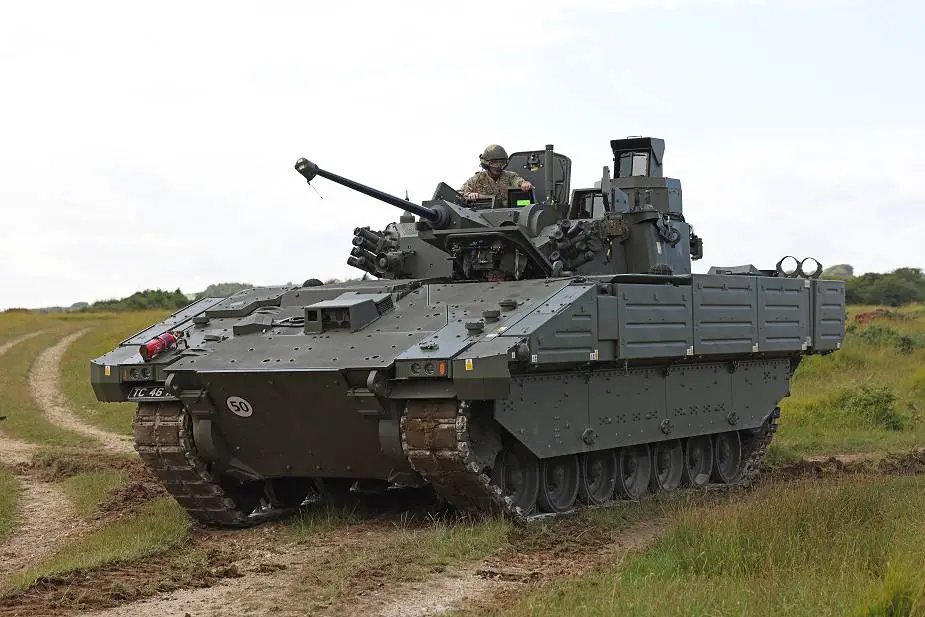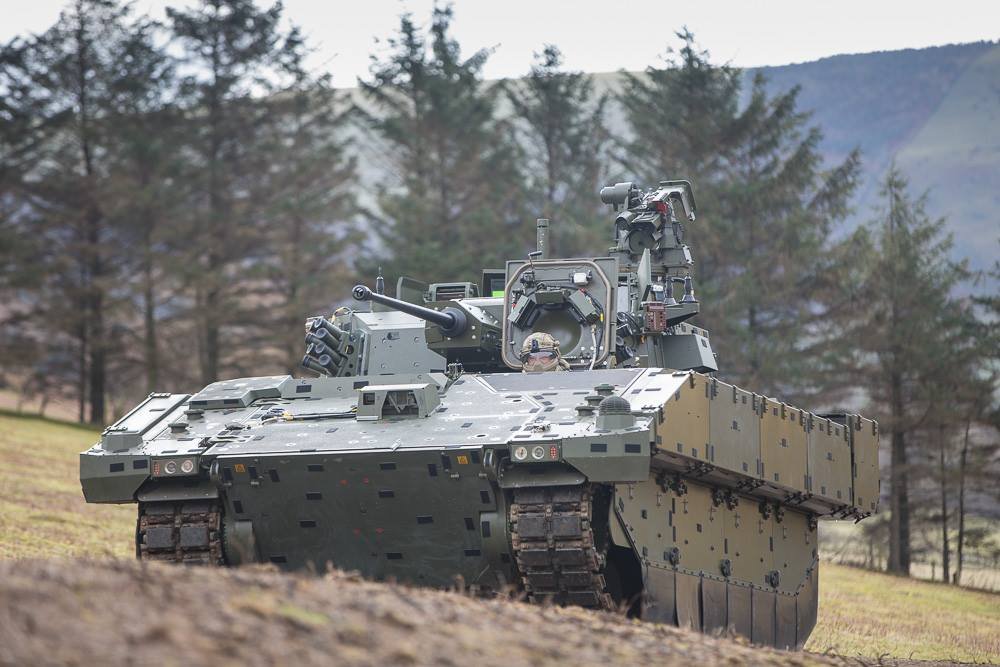
Specialism on AFVs, tanks & tech | Visit my blog | Principal at @JanesINTEL | Member @MilWritersGuild/@UKFightClub1 | Views my own L/RT≠E
12 subscribers
How to get URL link on X (Twitter) App


 #2 If a platform exhibits N&V that is excessive, it will generally manifest most evidently in two places: people and systems.
#2 If a platform exhibits N&V that is excessive, it will generally manifest most evidently in two places: people and systems.

 I’ve broken into a few parts; on to part 3 – Why is Titan a serious problem area? This one is the grim bit of the series, but to be clear the intent is to show plainly the criticality of TYRO and back it as an essential requirement that must be delivered, not just bash on Titan.
I’ve broken into a few parts; on to part 3 – Why is Titan a serious problem area? This one is the grim bit of the series, but to be clear the intent is to show plainly the criticality of TYRO and back it as an essential requirement that must be delivered, not just bash on Titan.

 (2/19) As usual I’m going to try to stick to the kit, I’m not a doctrine or strategy pro on wider force design. Just here to give some facts for others to be informed and make use of as they wish.
(2/19) As usual I’m going to try to stick to the kit, I’m not a doctrine or strategy pro on wider force design. Just here to give some facts for others to be informed and make use of as they wish.

 The original Ajax requirement, FRES SV, had a range of variants beyond the six the Army is presently buying, and returning to these (and a few more, like IFV) in pursuit of a common medium platform would be a good approach.
The original Ajax requirement, FRES SV, had a range of variants beyond the six the Army is presently buying, and returning to these (and a few more, like IFV) in pursuit of a common medium platform would be a good approach. 

 I’ve broken into a few parts; (1) What is Titan and Project TYRO; (2) Why is combat bridging important anyway; (3) Why is Titan a serious problem area; (4) Whats the plan for TYRO CSB; and (5) What are the other options and the implications?
I’ve broken into a few parts; (1) What is Titan and Project TYRO; (2) Why is combat bridging important anyway; (3) Why is Titan a serious problem area; (4) Whats the plan for TYRO CSB; and (5) What are the other options and the implications?




 The first practical gas turbine powered vehicle, the FV200 Turbine Test Vehicle, a Conqueror. 'Practical' is a caveat - the Germans actually had the first gas turbine tank, a Jagdtiger in WW2, but it had a problematic habit of setting trees and other nearby objects on fire.
The first practical gas turbine powered vehicle, the FV200 Turbine Test Vehicle, a Conqueror. 'Practical' is a caveat - the Germans actually had the first gas turbine tank, a Jagdtiger in WW2, but it had a problematic habit of setting trees and other nearby objects on fire. 








 Specialist AFV are ubiquitous now, but the D-Day landings were some of the first outings for many of these capabilities or at the least cemented their utility upon which several generations have evolved since.
Specialist AFV are ubiquitous now, but the D-Day landings were some of the first outings for many of these capabilities or at the least cemented their utility upon which several generations have evolved since.

 MGV was a common family of AFV that were bold in their vision - baseline 24 ton hull (later upped to c.30t) with hybrid drive & CRT track, loads of data & sensor fusion, a lot of automation (most variants were 2-man crews), with less passive armour and more smart solutions.
MGV was a common family of AFV that were bold in their vision - baseline 24 ton hull (later upped to c.30t) with hybrid drive & CRT track, loads of data & sensor fusion, a lot of automation (most variants were 2-man crews), with less passive armour and more smart solutions. 

 So, broad strokes. LMP and BSP form a full spectrum of wheeled vehicle capability for the Army. LMP comprises three strands – Light Utility, Light Protected Mobility, and Medium Protected Mobility. Boxer sits above as a de-facto Heavy Protected Mobility of sorts
So, broad strokes. LMP and BSP form a full spectrum of wheeled vehicle capability for the Army. LMP comprises three strands – Light Utility, Light Protected Mobility, and Medium Protected Mobility. Boxer sits above as a de-facto Heavy Protected Mobility of sorts 

 2/ 🇮🇹 Italy: Leopard 2A8
2/ 🇮🇹 Italy: Leopard 2A8

 2/ A quick background of Amphibious Assault Vehicles (AAVs). Since the DUKW and LVT in the 1940s, there has been a niche for AFV capable of swimming when afloat and transitioning to land movement seamlessly to transport and support an opposed landing and inland movement.
2/ A quick background of Amphibious Assault Vehicles (AAVs). Since the DUKW and LVT in the 1940s, there has been a niche for AFV capable of swimming when afloat and transitioning to land movement seamlessly to transport and support an opposed landing and inland movement. 


 2/ The initial plan was to manage obsolescence and reduce some of the maintenance burden - in recent years the training has been curtailed simply because funding for spares and consumables wasn't there, so they are rather keen to minimise outdated elements.
2/ The initial plan was to manage obsolescence and reduce some of the maintenance burden - in recent years the training has been curtailed simply because funding for spares and consumables wasn't there, so they are rather keen to minimise outdated elements.

 2/ The design remains unchanged at the overall design level from that which I summarised 3 years ago at contract award in this thread:
2/ The design remains unchanged at the overall design level from that which I summarised 3 years ago at contract award in this thread: https://x.com/JonHawkes275/status/1372838722027261955?s=20

 2/ There *could* be a lift to 1,500 hp but there are major technical obstacles and there is no intent to do it. There is be a mid-ground to be found that is being looked at outside committed programmes.
2/ There *could* be a lift to 1,500 hp but there are major technical obstacles and there is no intent to do it. There is be a mid-ground to be found that is being looked at outside committed programmes.

https://twitter.com/JonHawkes275/status/1605498464002904065?s=20&t=AIZhVT6BbUs7BXTby0ov_w

 2/ Missed the start of this (increasingly large…) mini-series of threads? Start over here:
2/ Missed the start of this (increasingly large…) mini-series of threads? Start over here: https://twitter.com/JonHawkes275/status/1605498464002904065?s=20&t=AIZhVT6BbUs7BXTby0ov_w

 2/ If you want to start at the beginning, this mini-series started here:
2/ If you want to start at the beginning, this mini-series started here: https://twitter.com/JonHawkes275/status/1605498464002904065?s=20&t=U_Ql8V7yvVRc5AdJmCwQ4A


 2/ This part of the series on obstacle crossing got wildly out of hand (about 140 tweets) so I've broken it into further mini-threads. This first one is step climbing.
2/ This part of the series on obstacle crossing got wildly out of hand (about 140 tweets) so I've broken it into further mini-threads. This first one is step climbing.